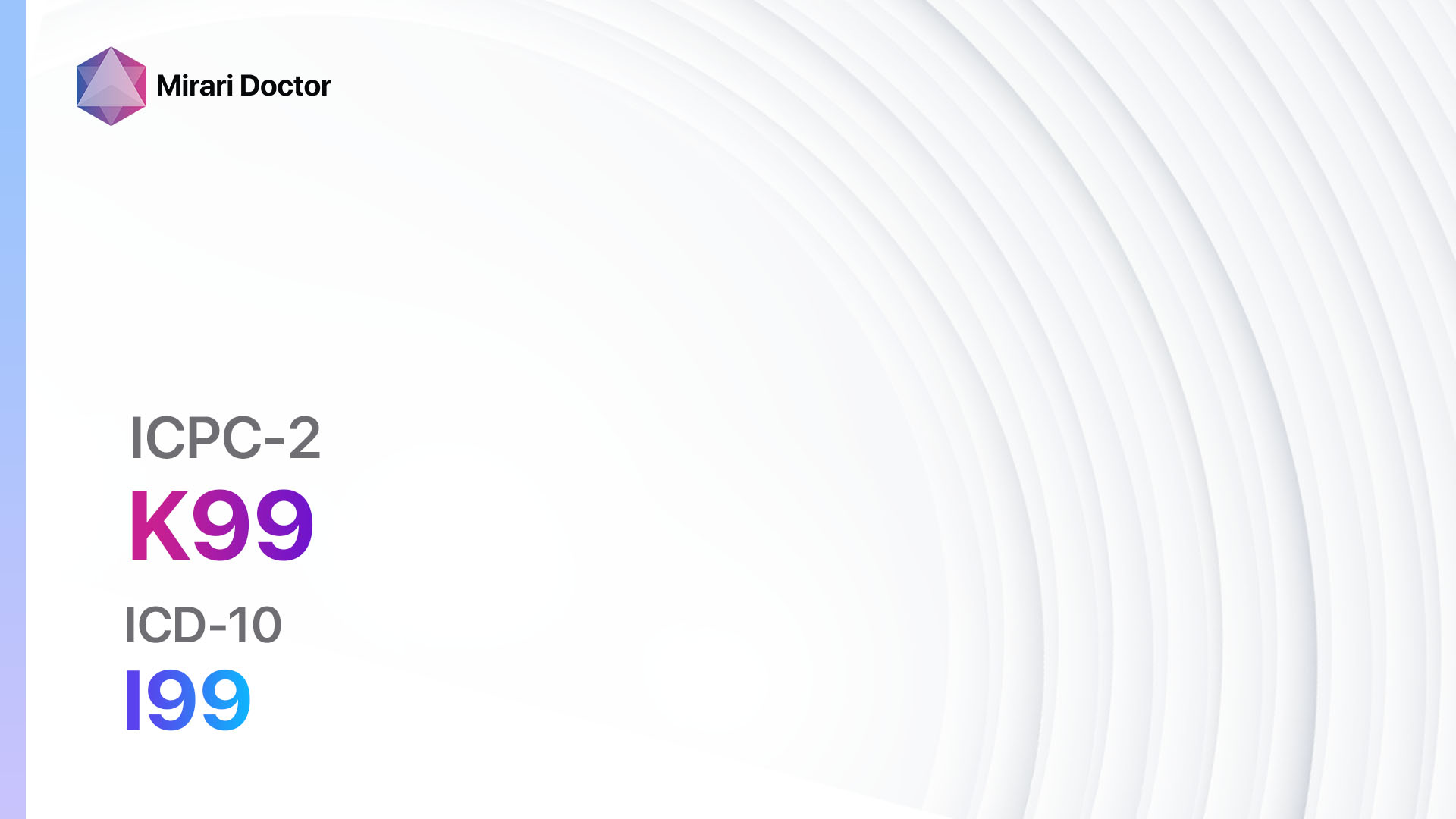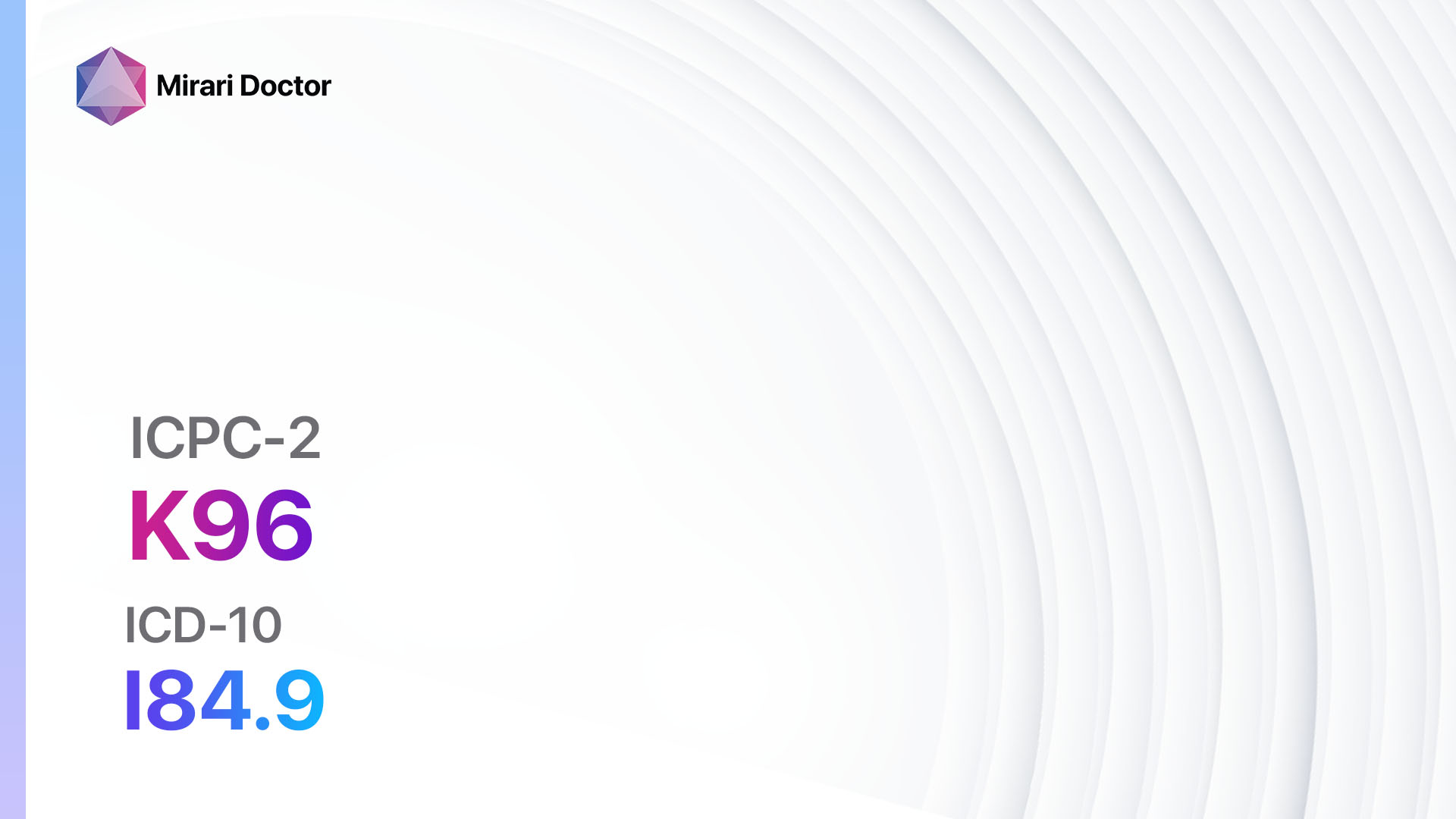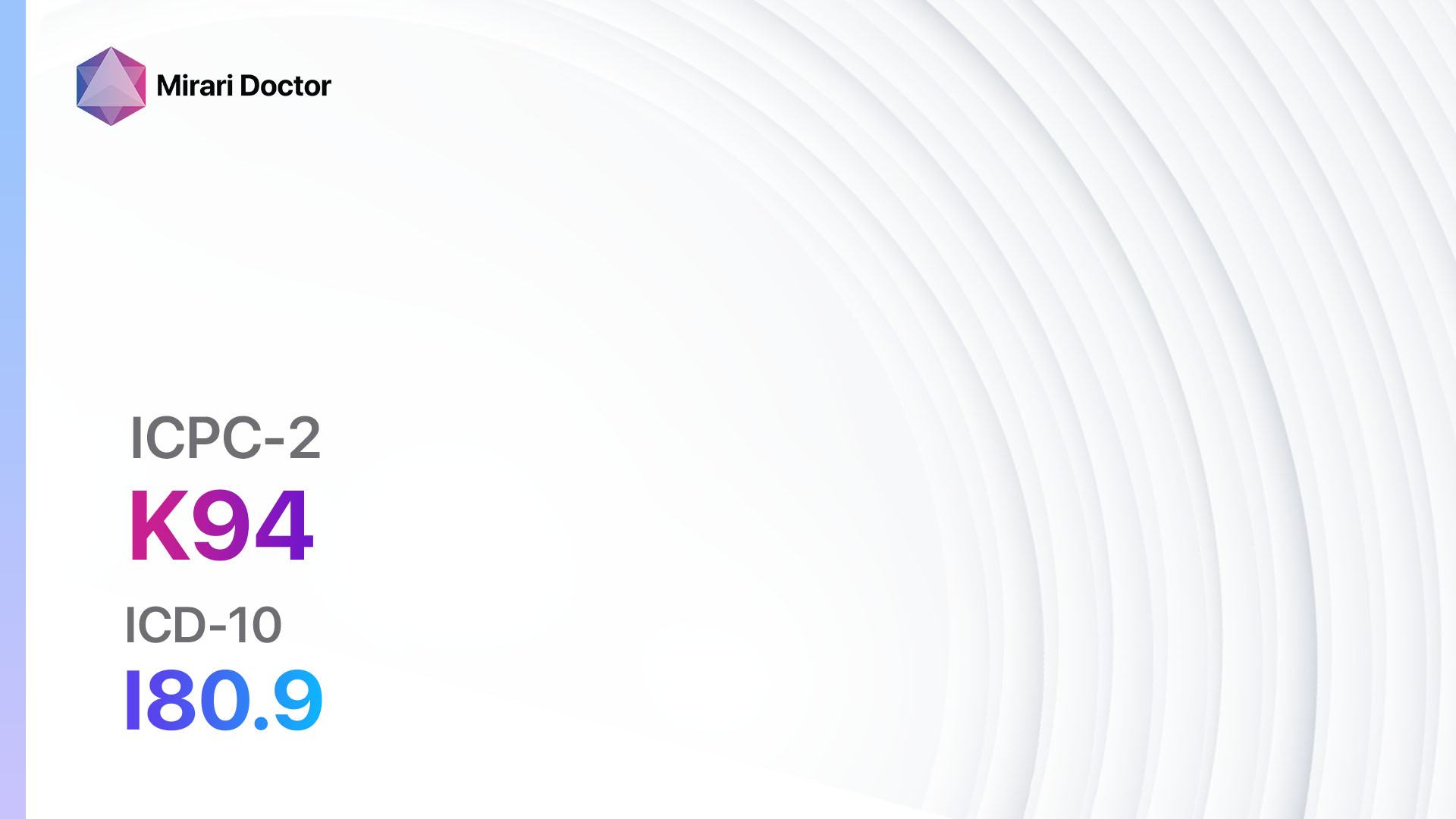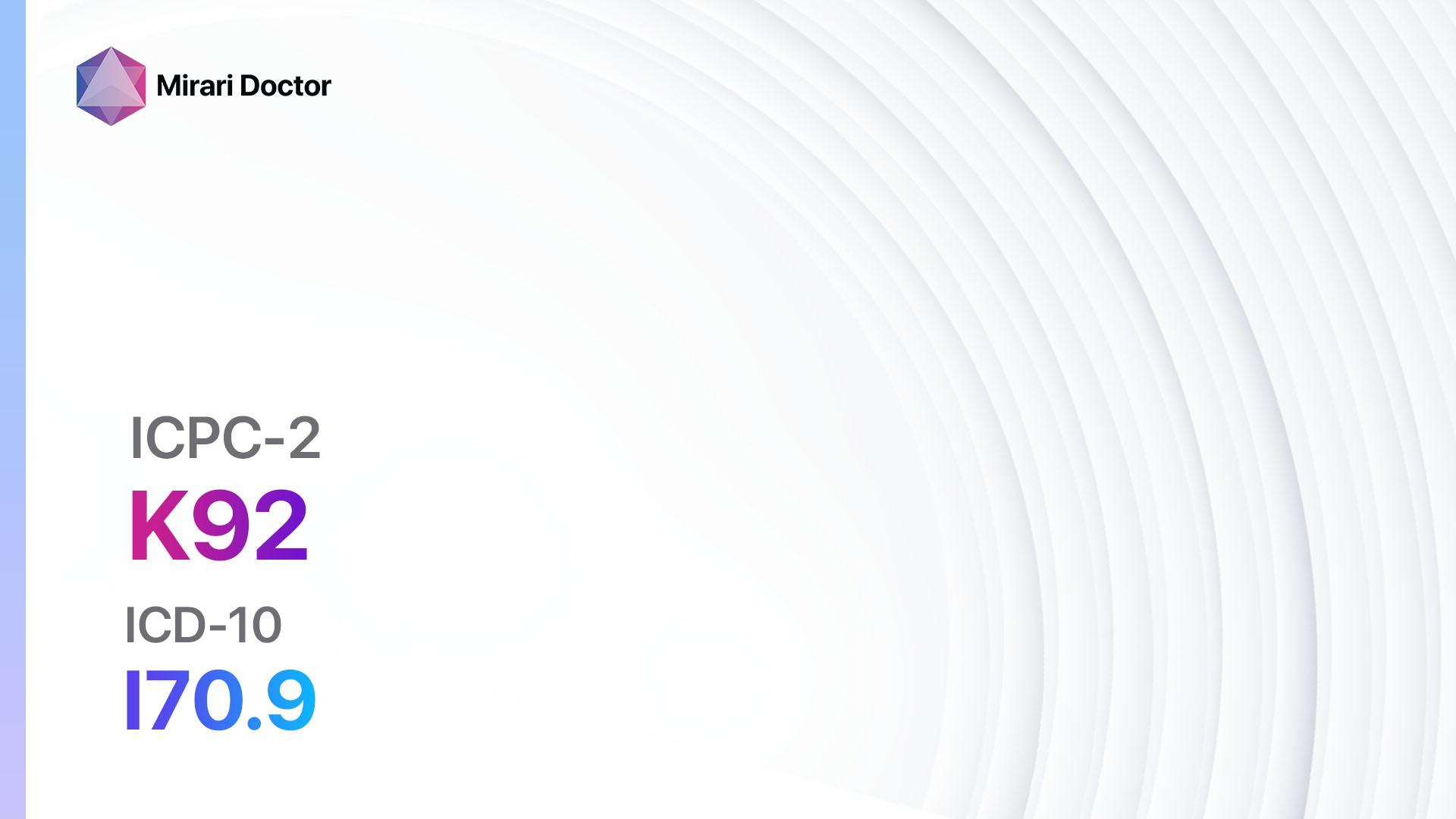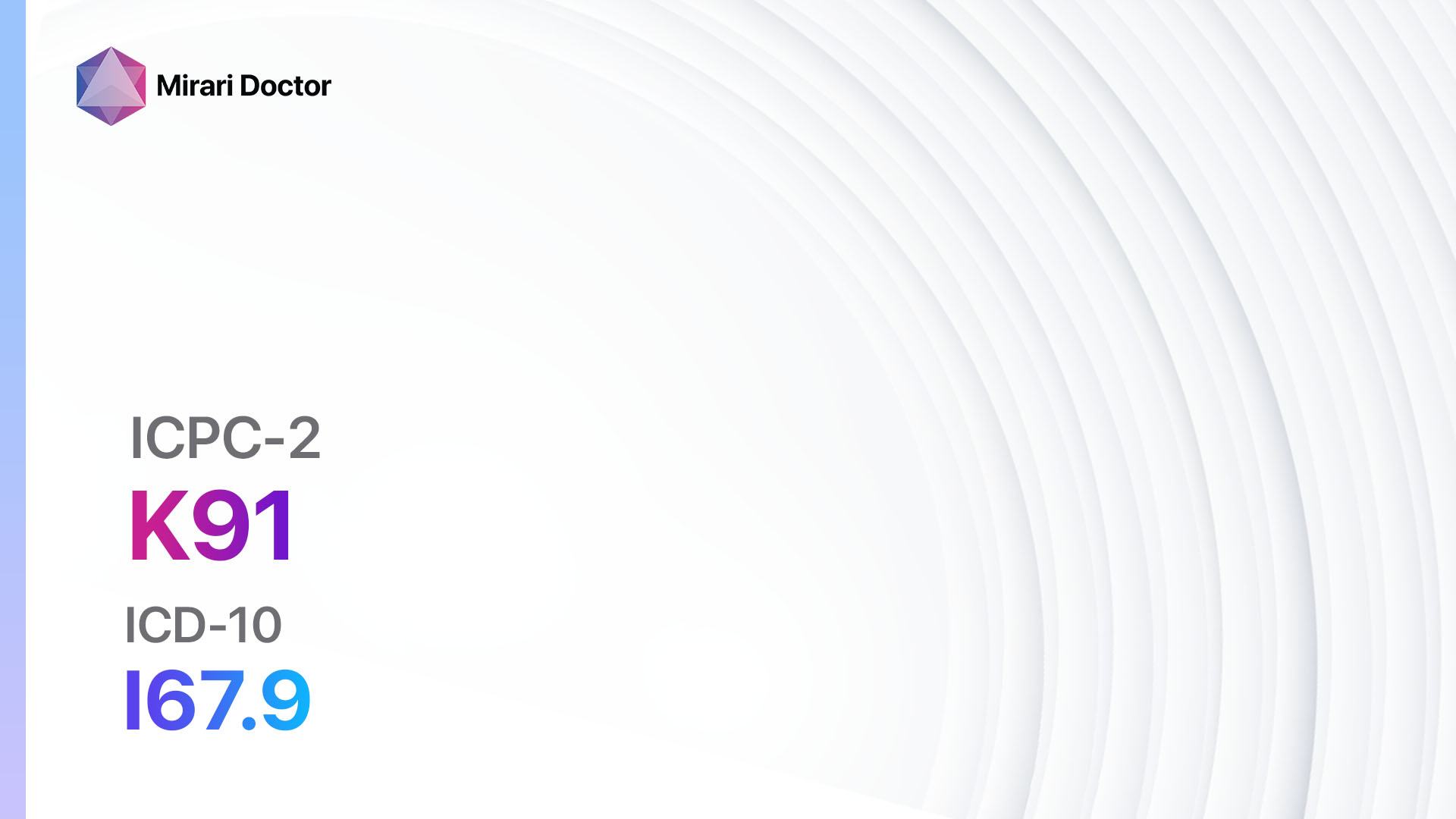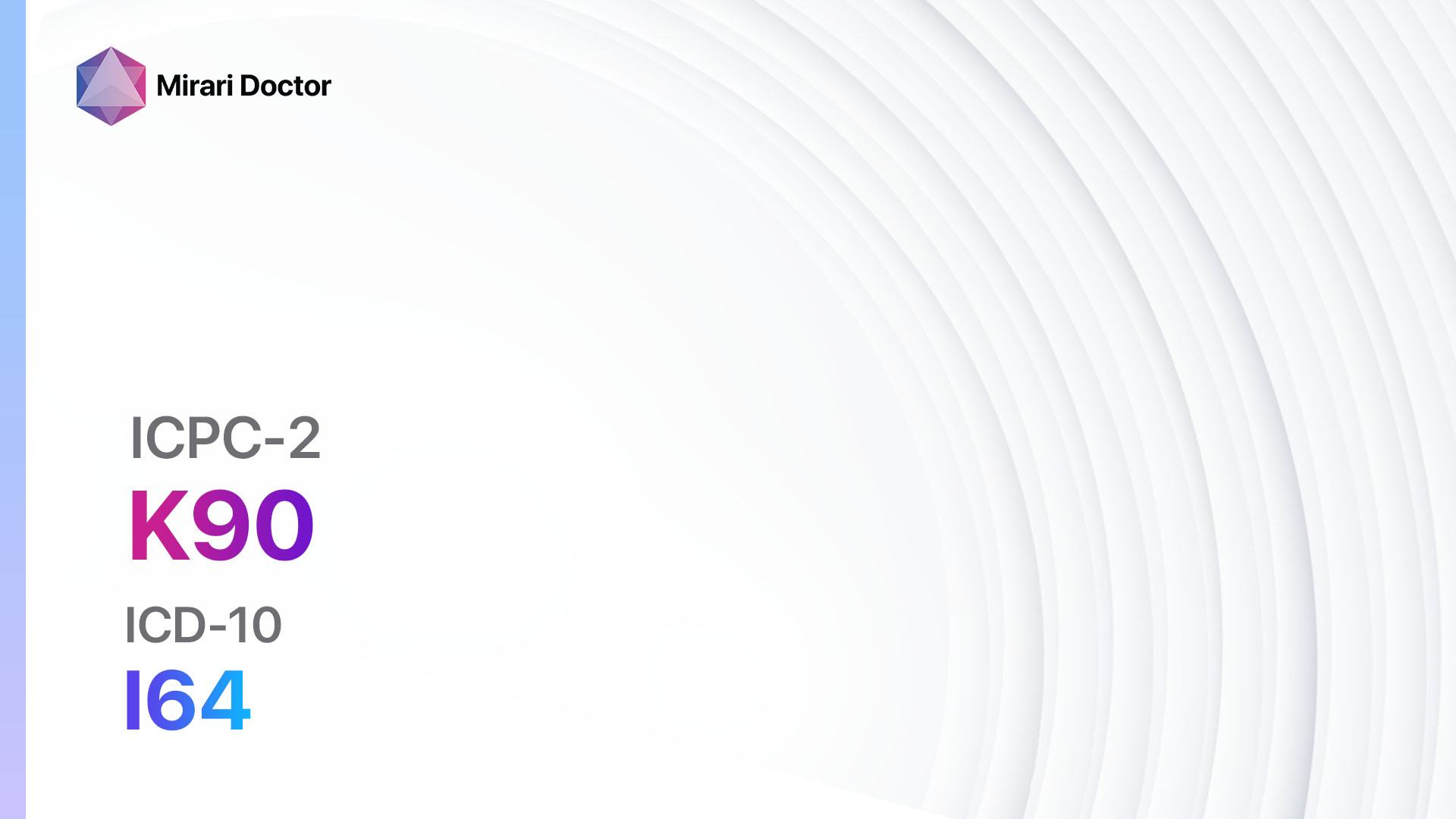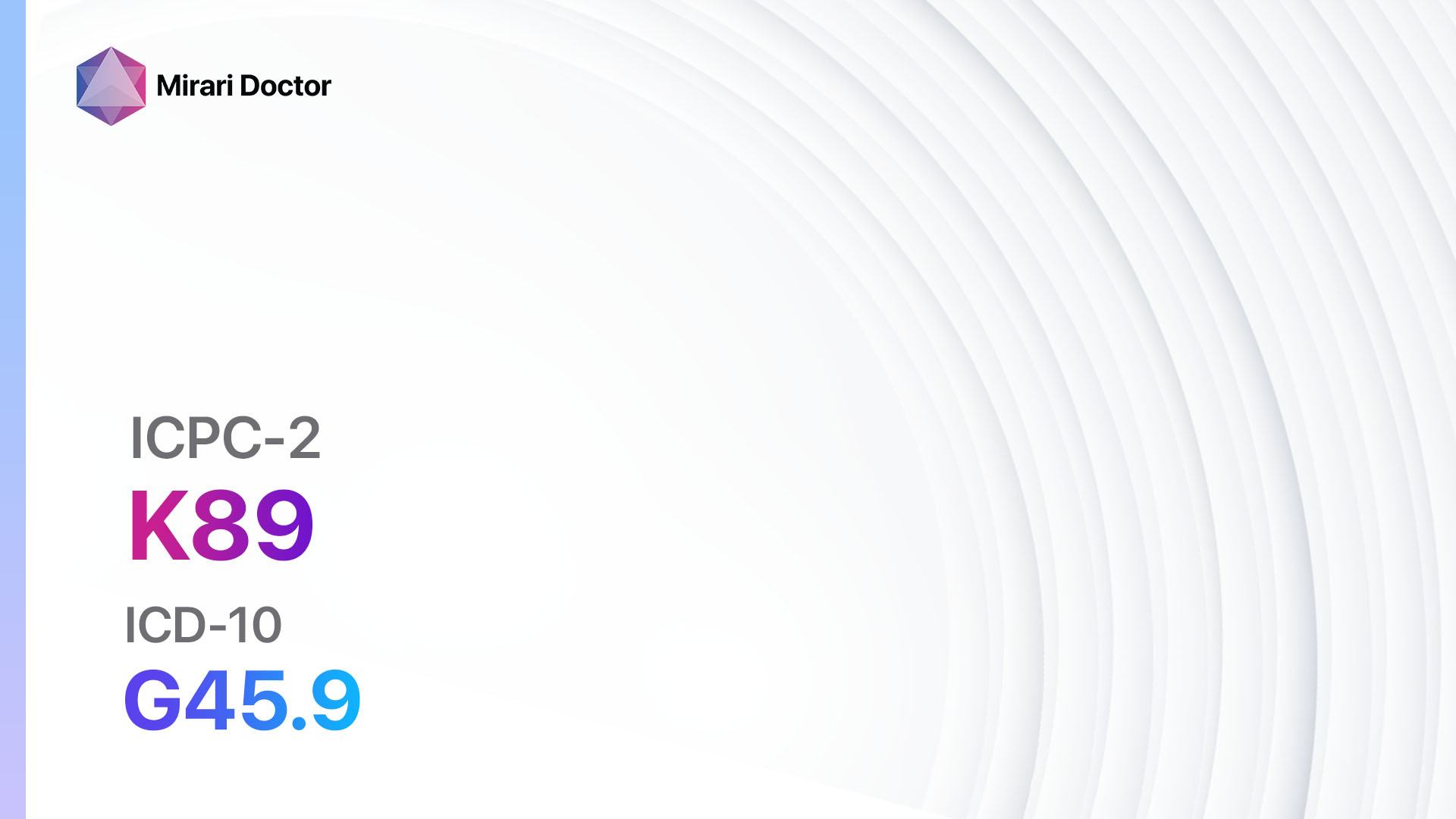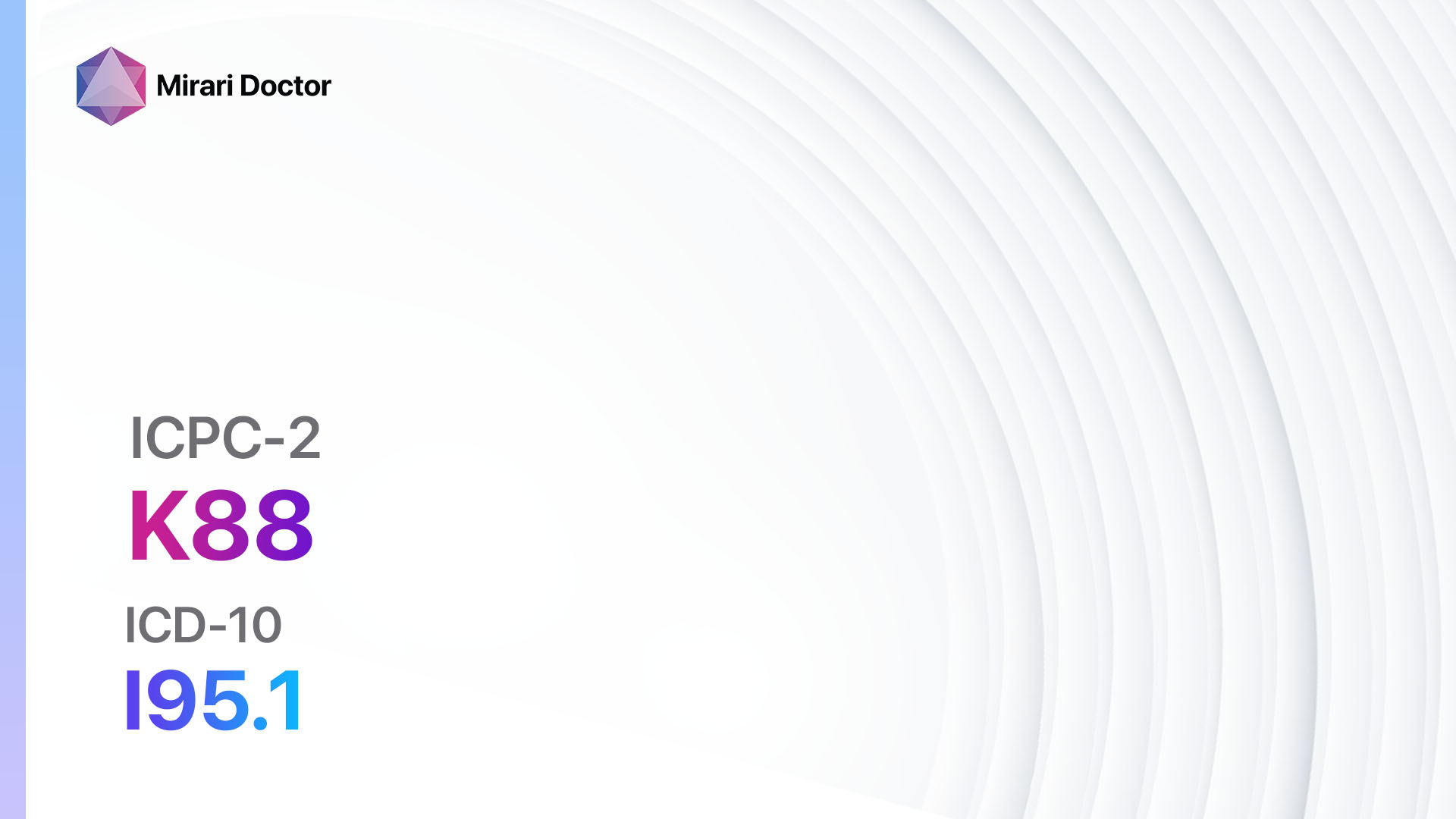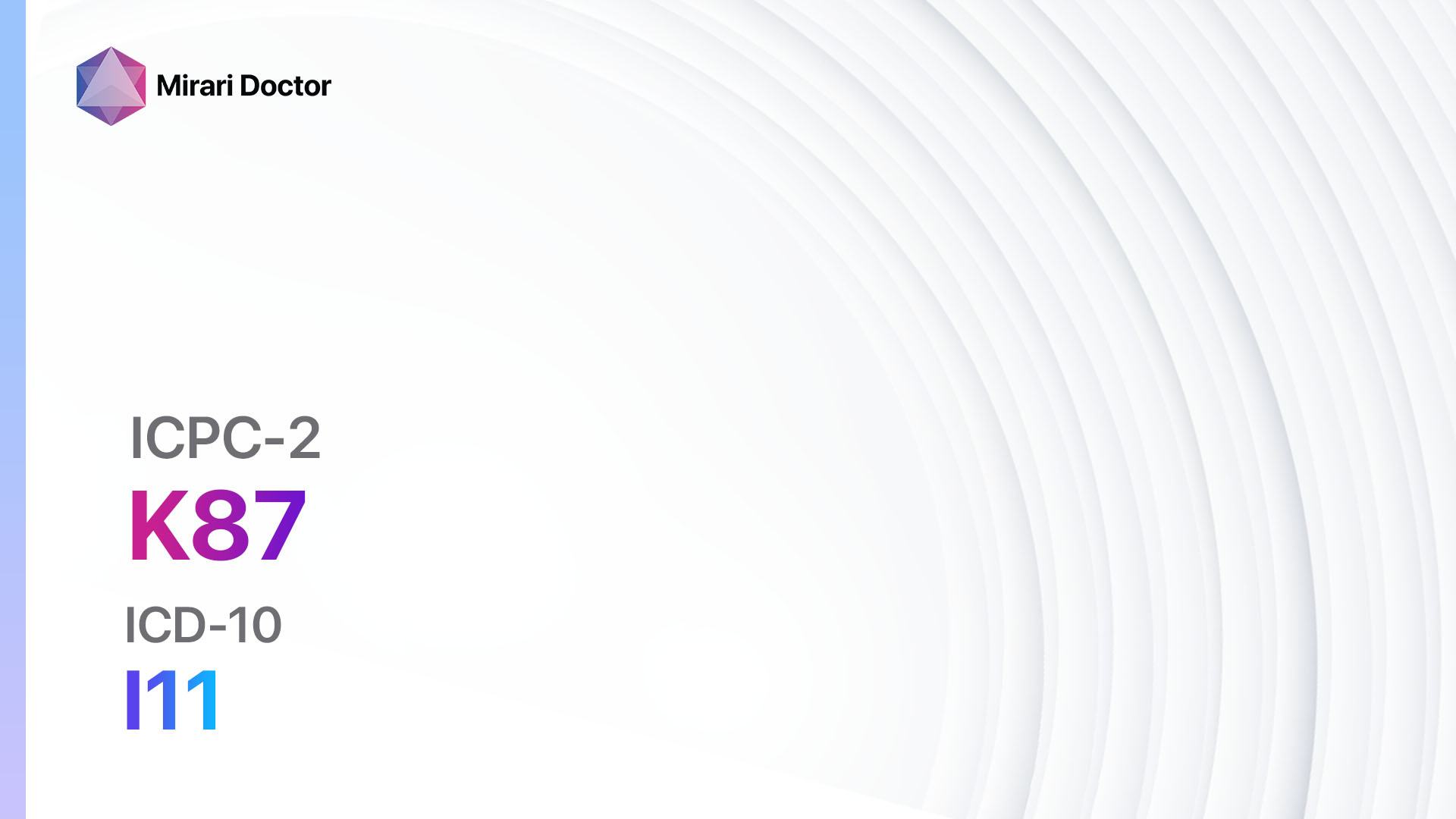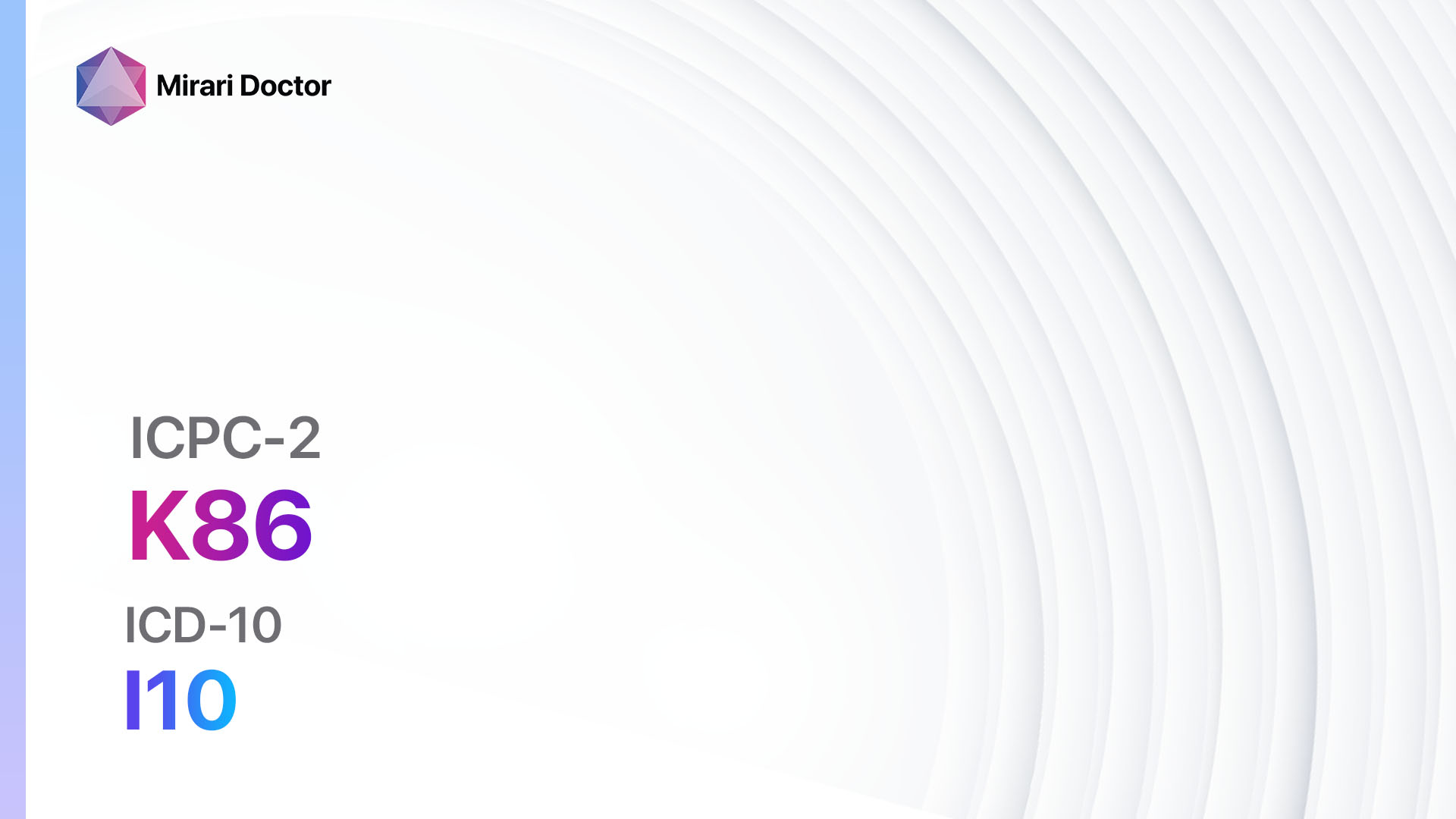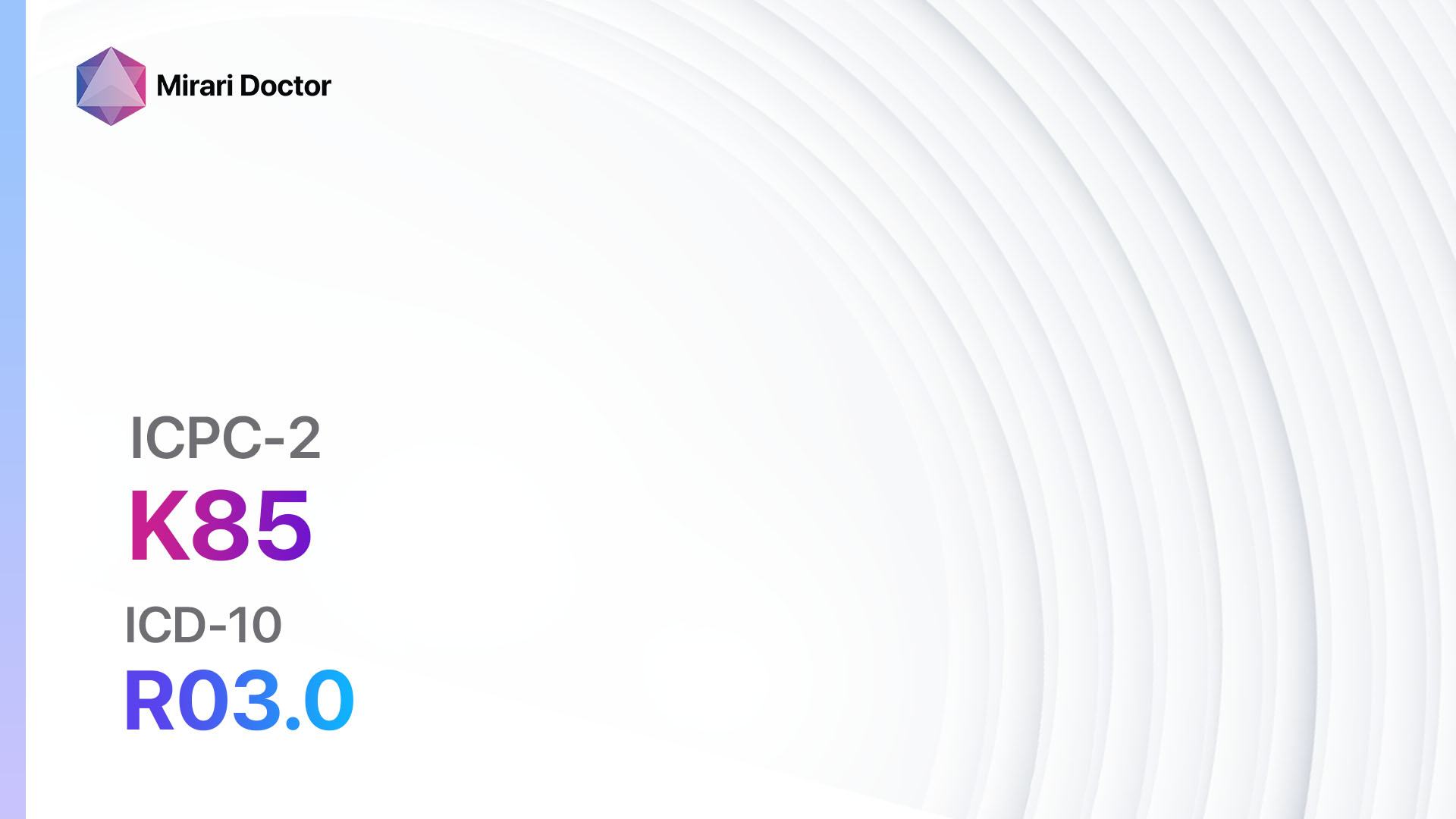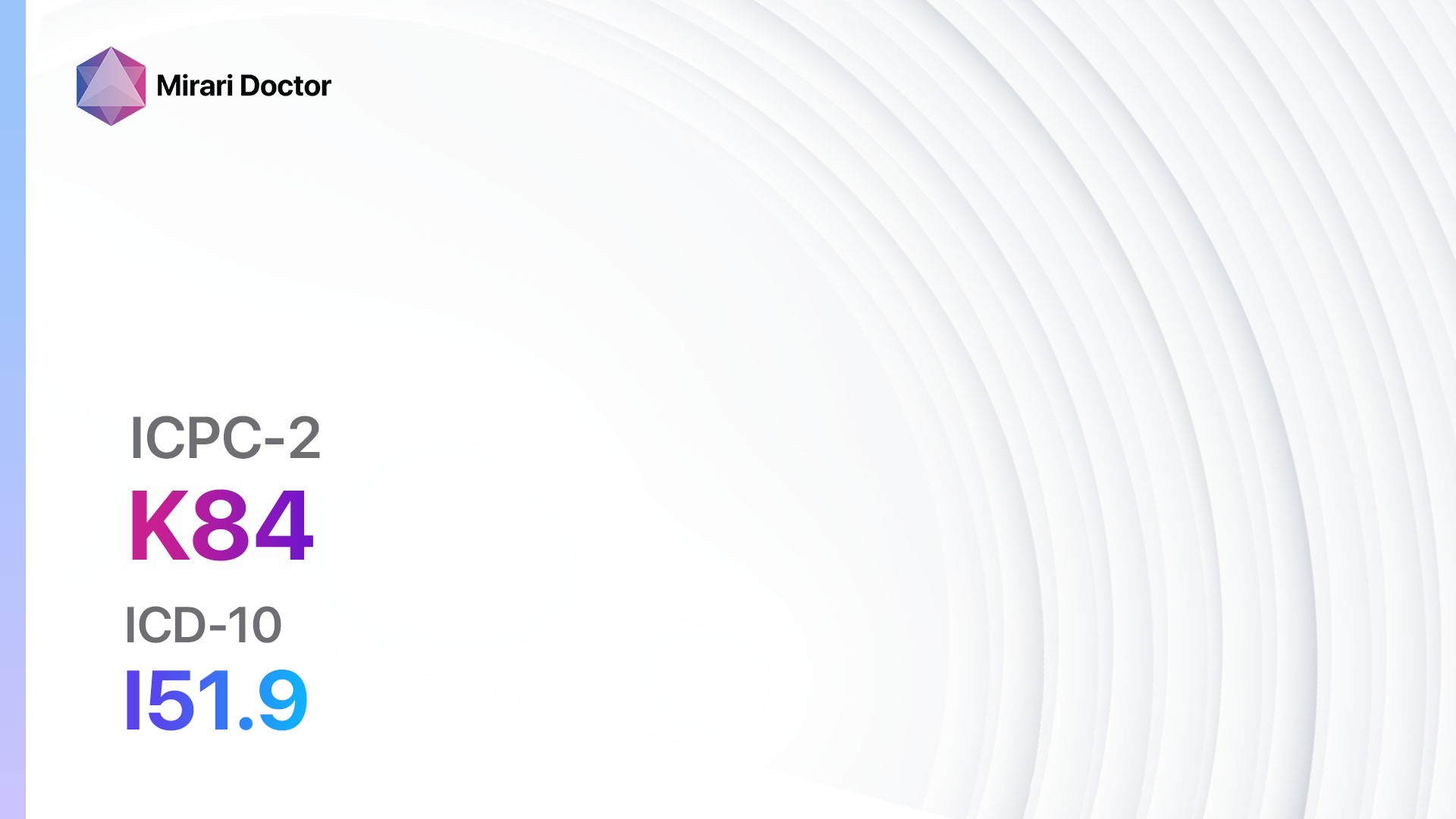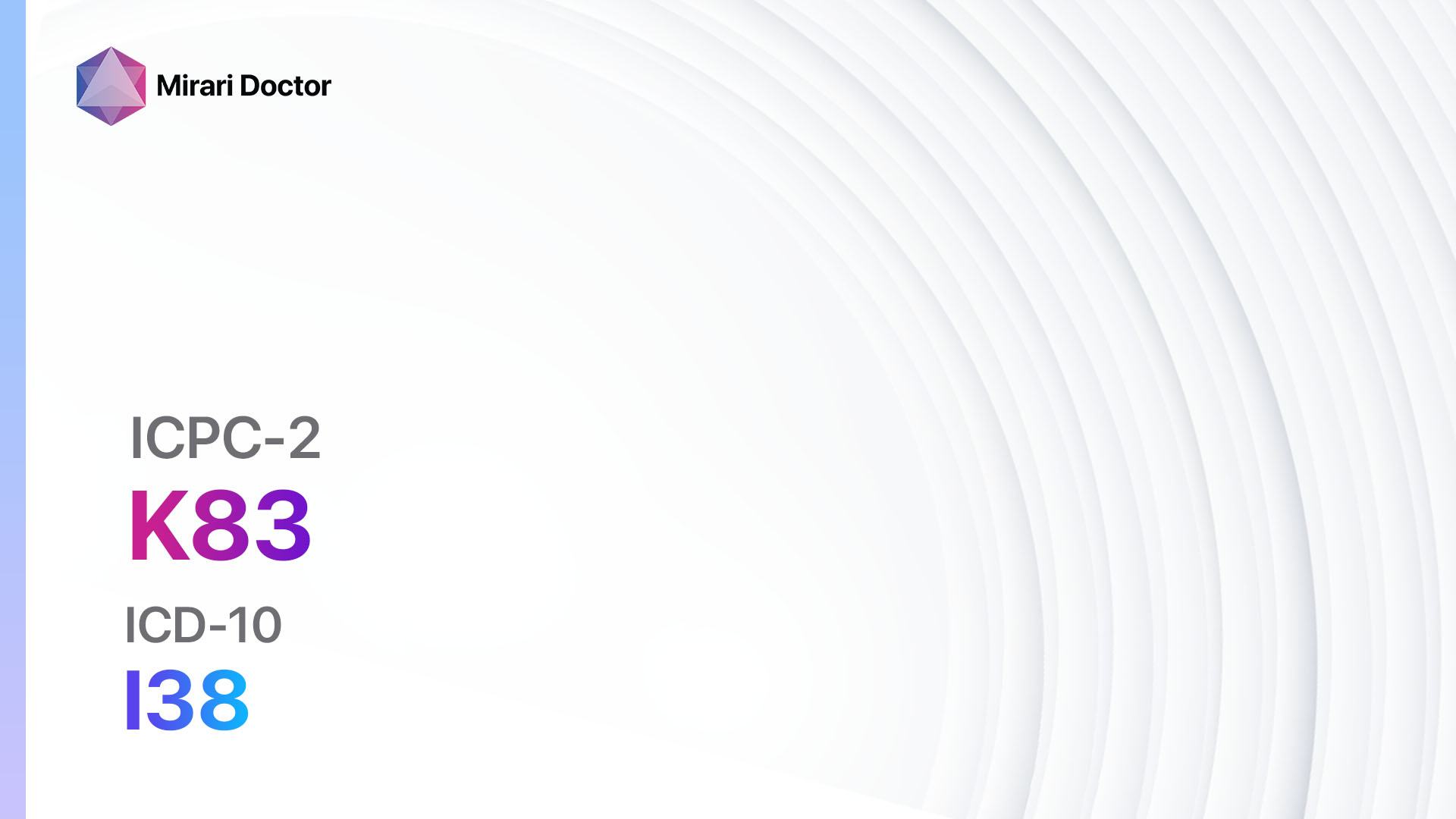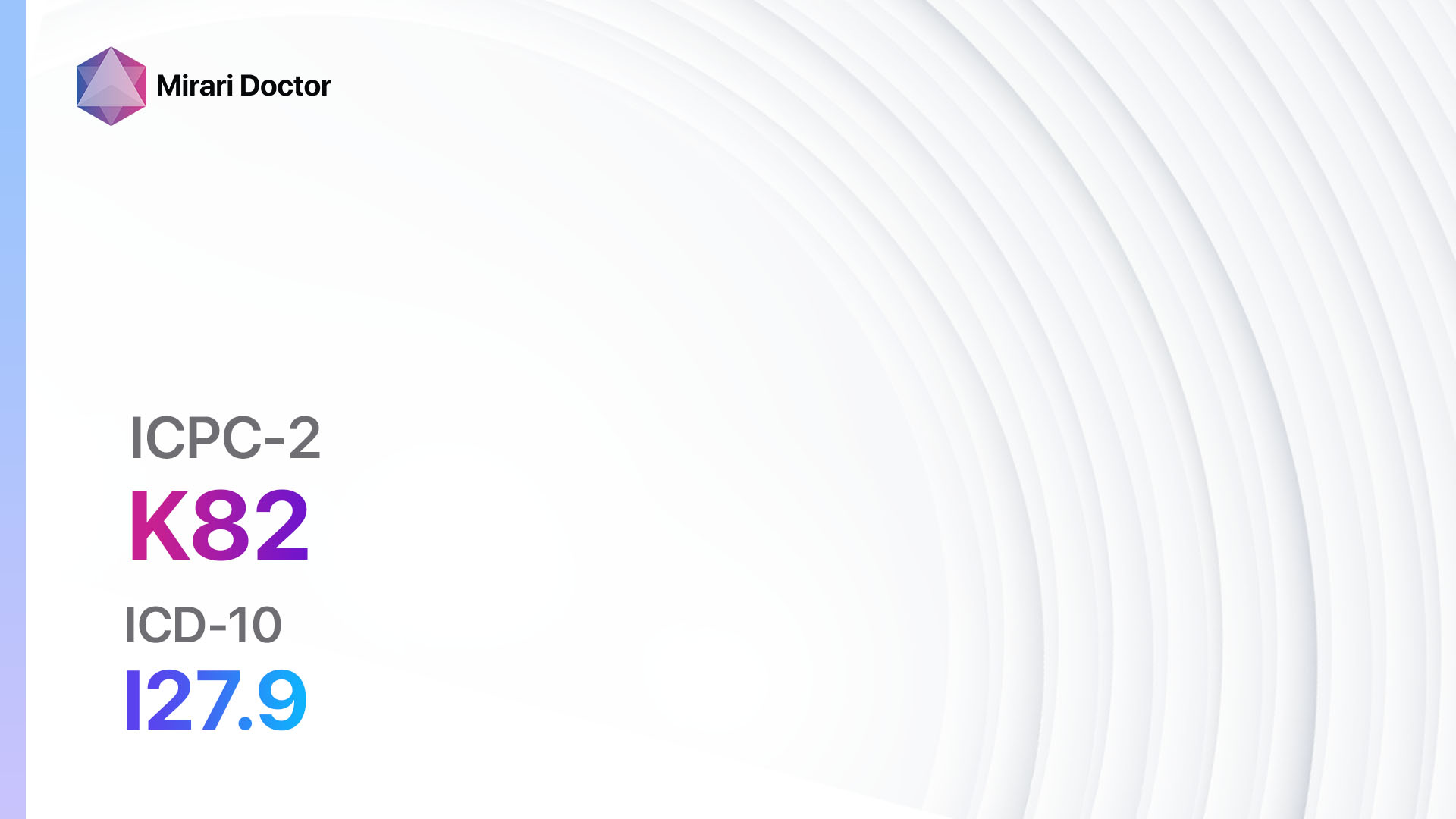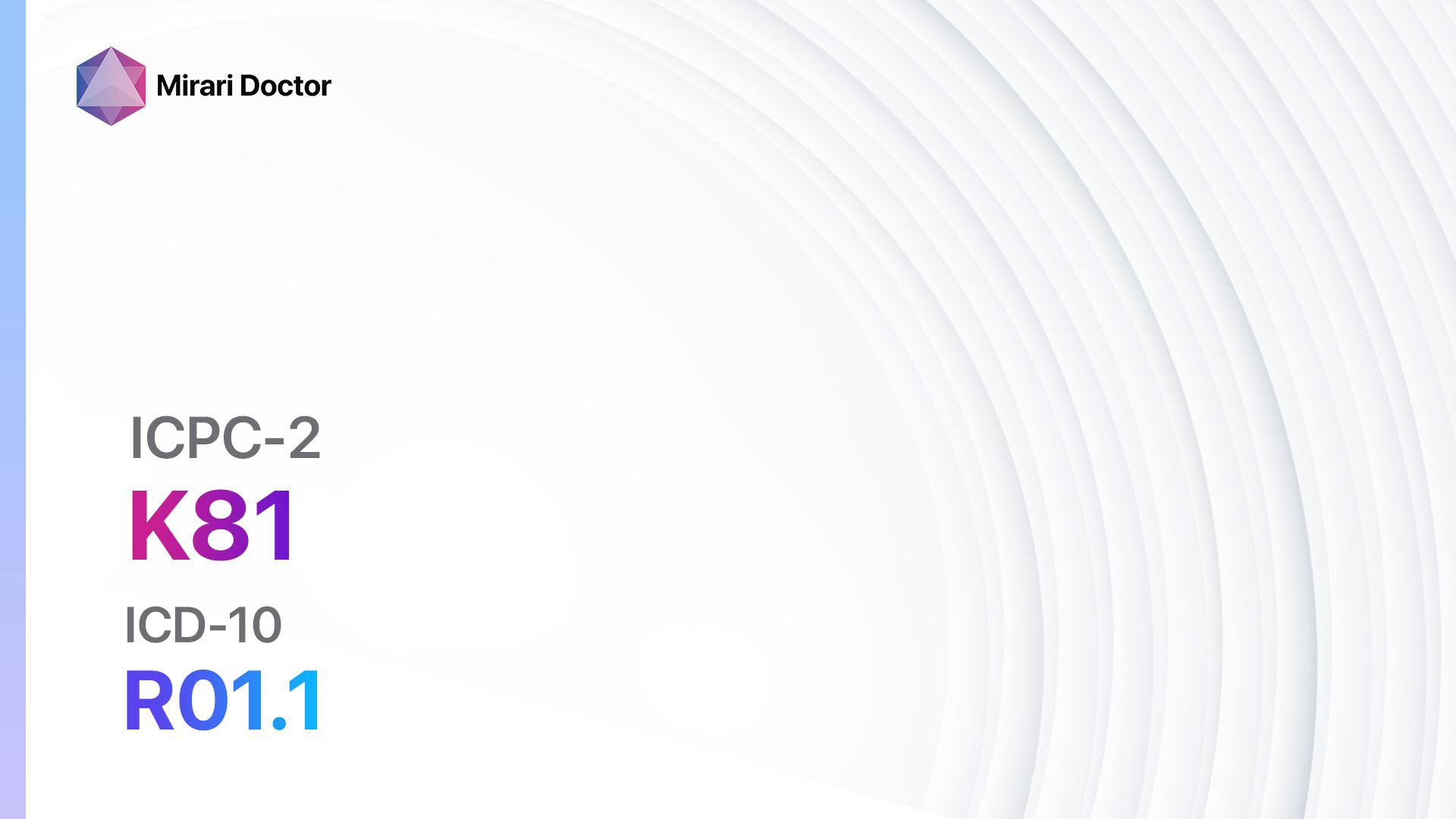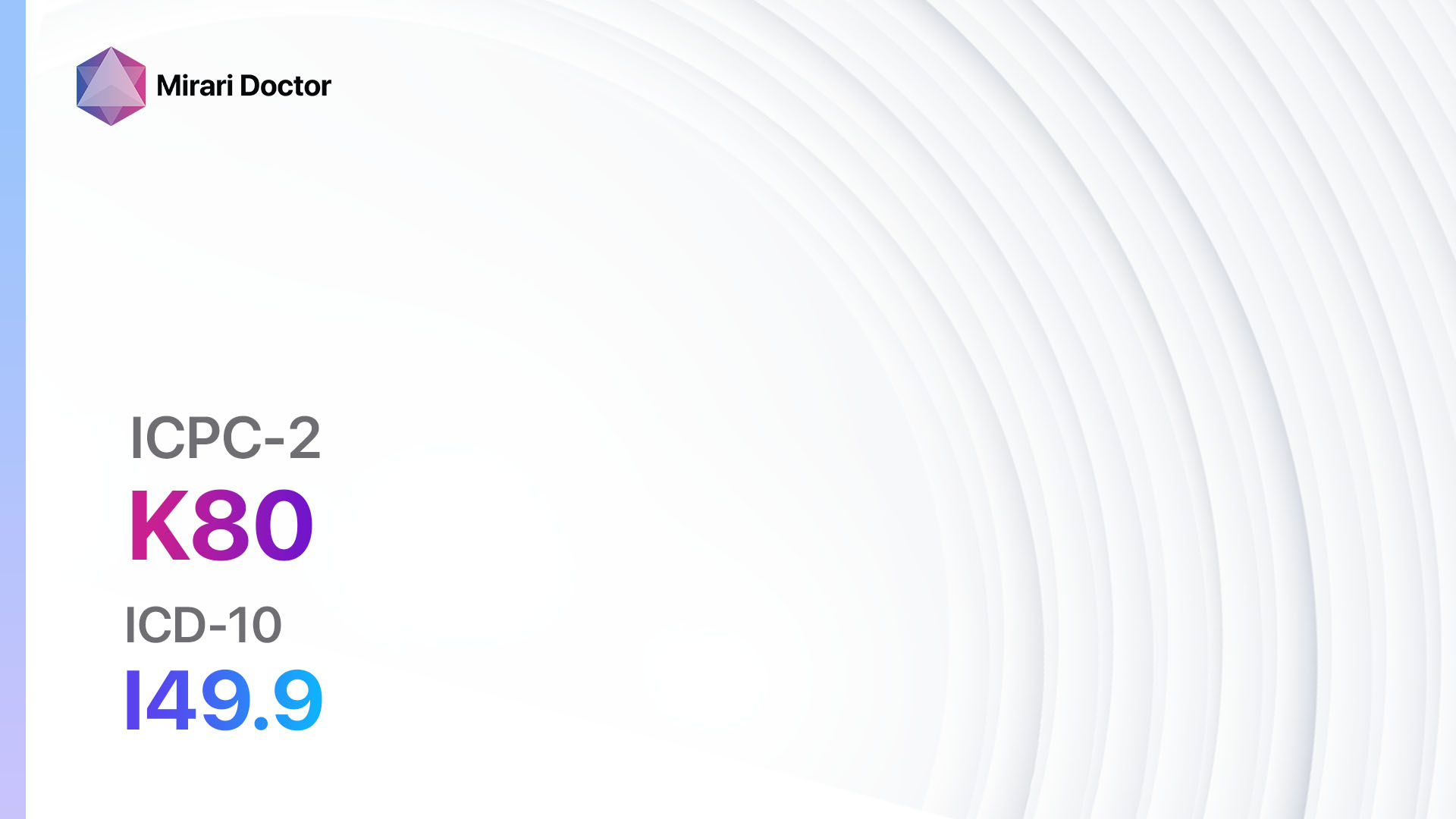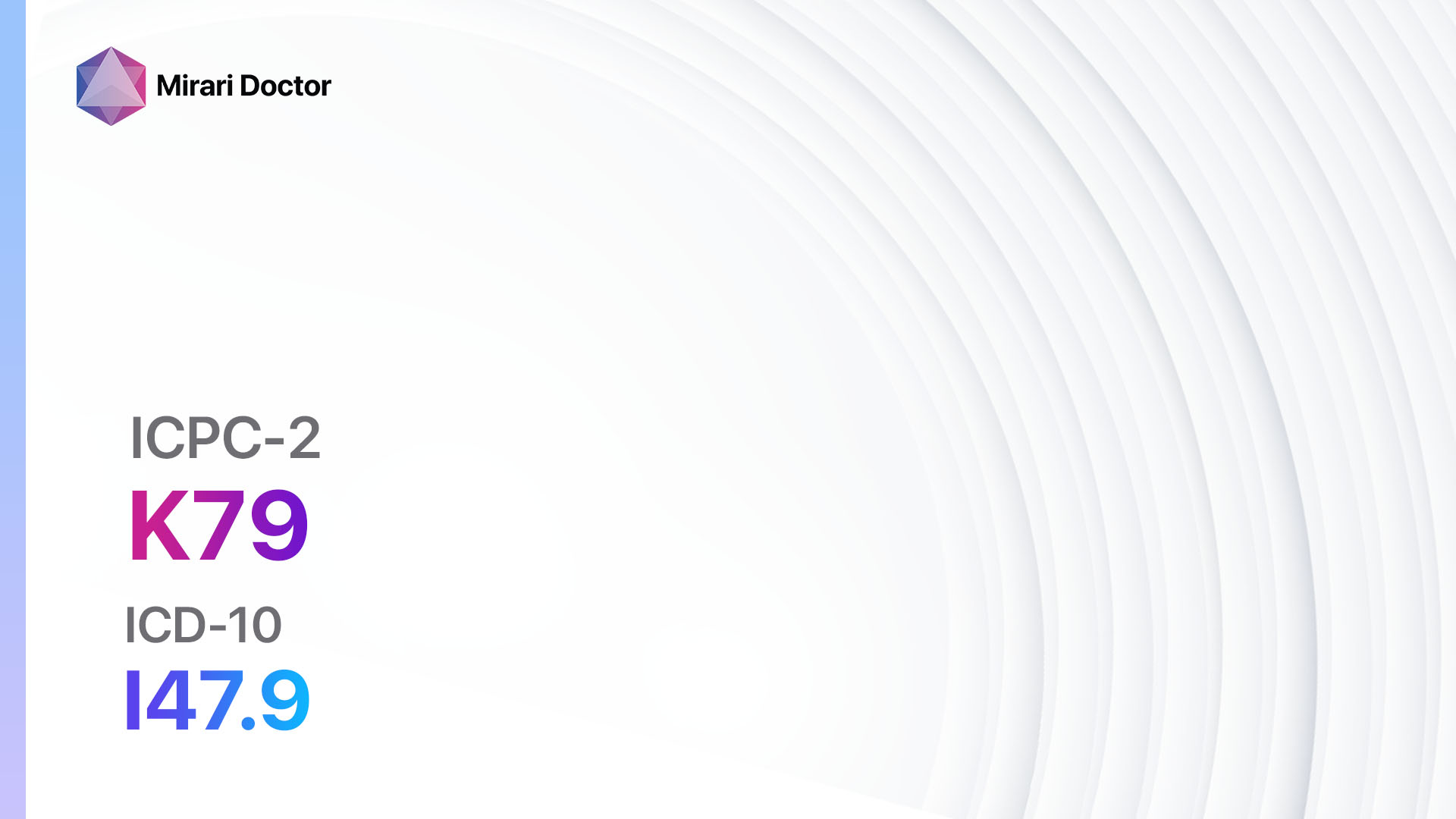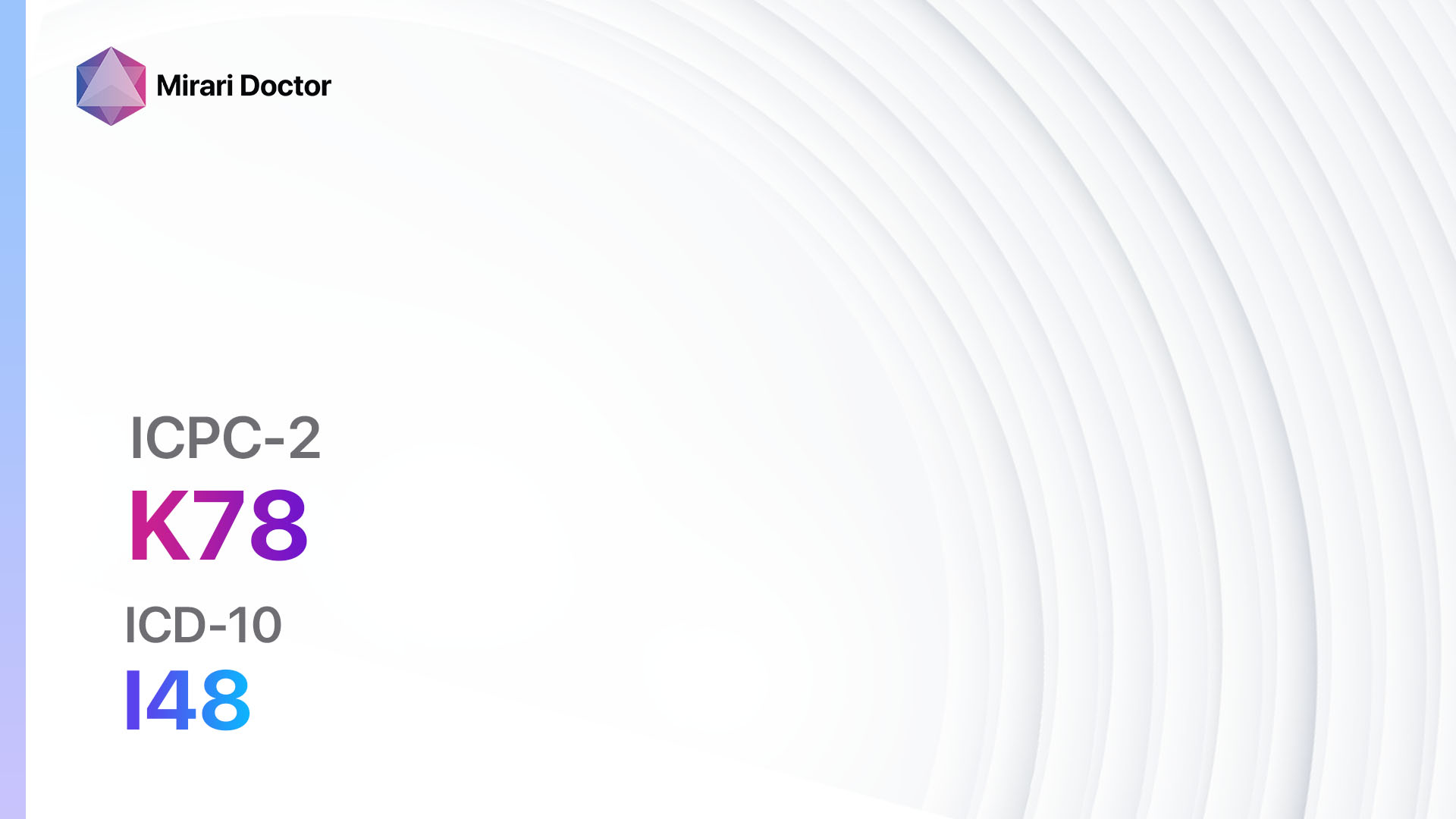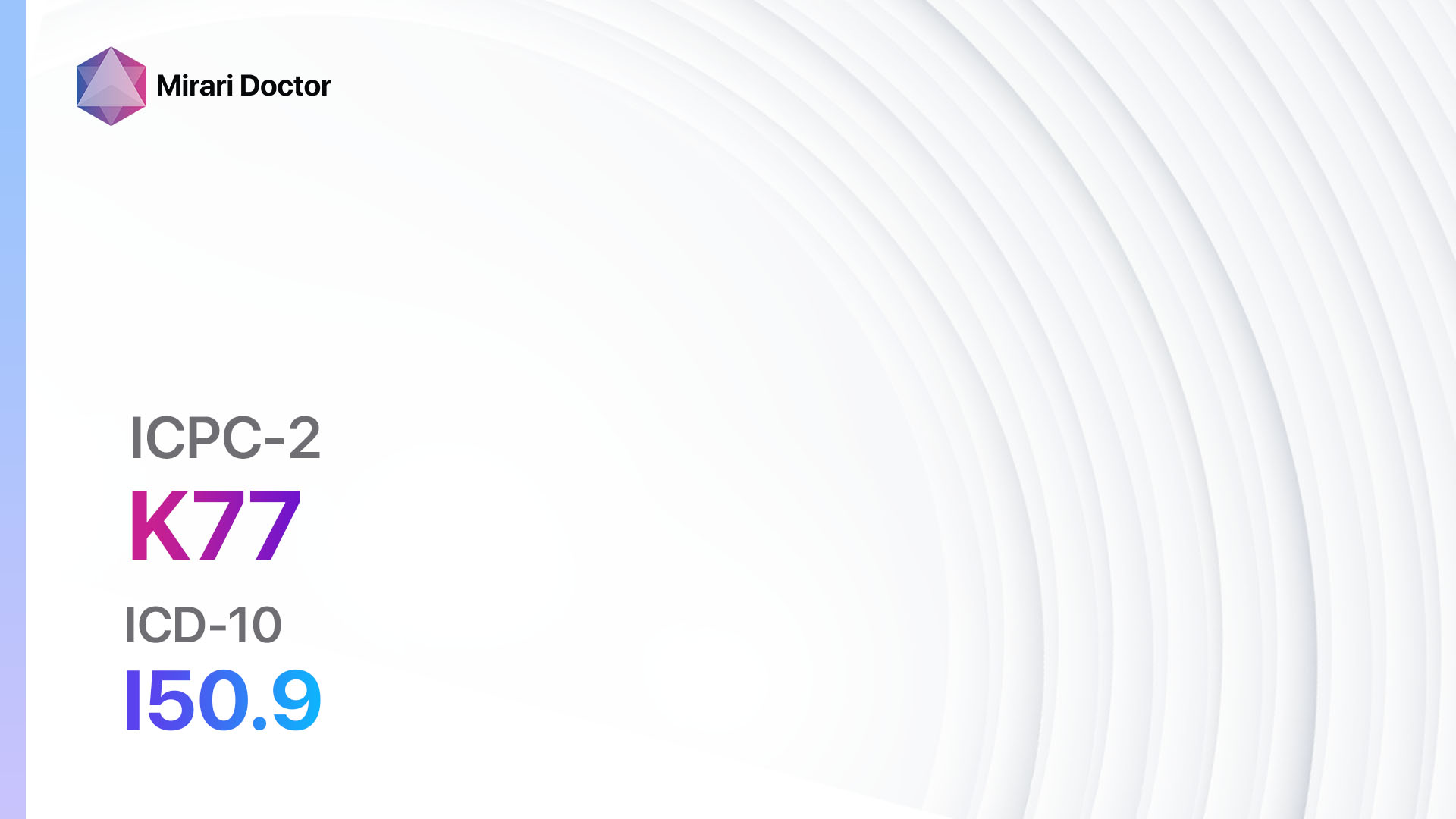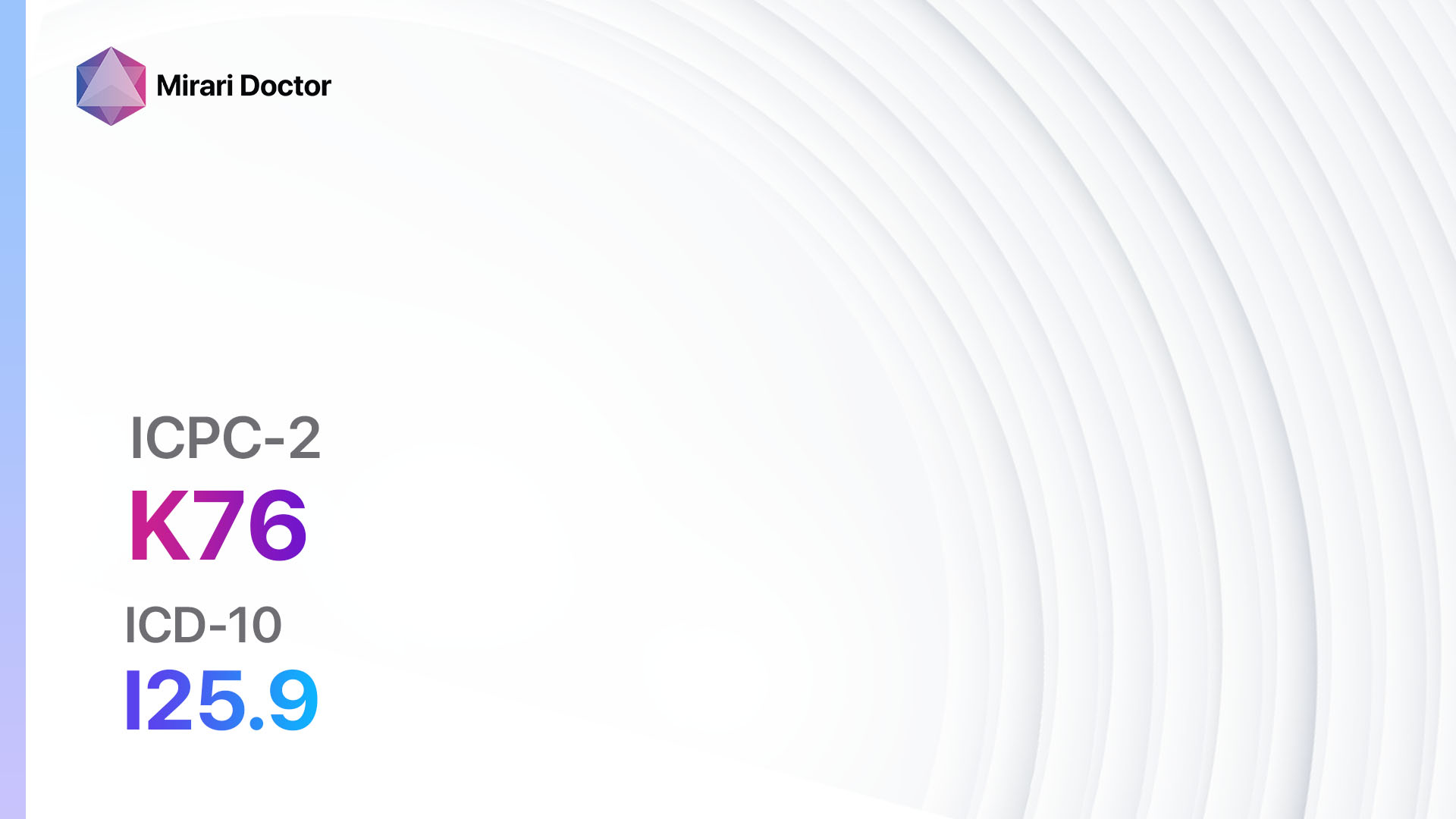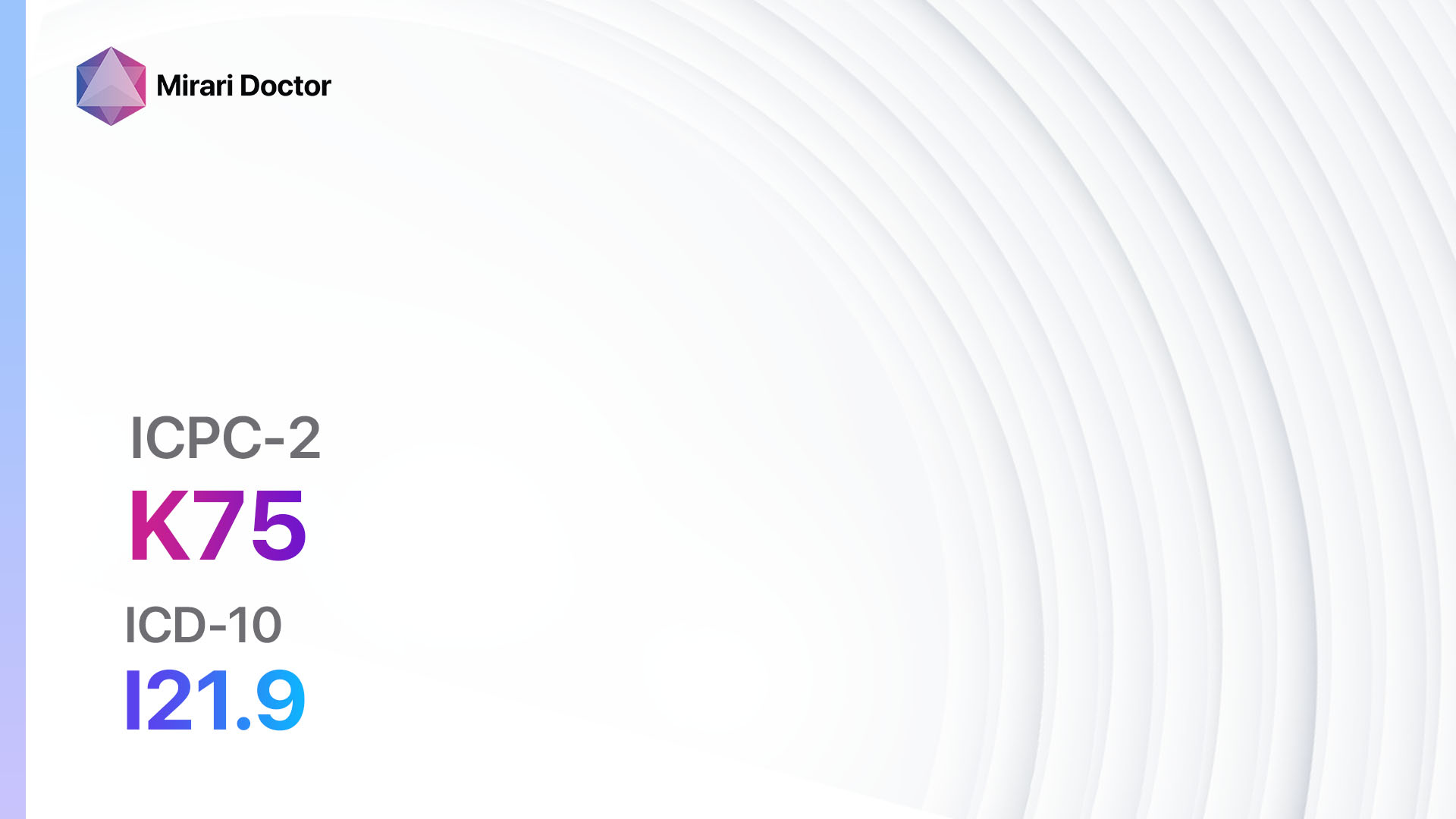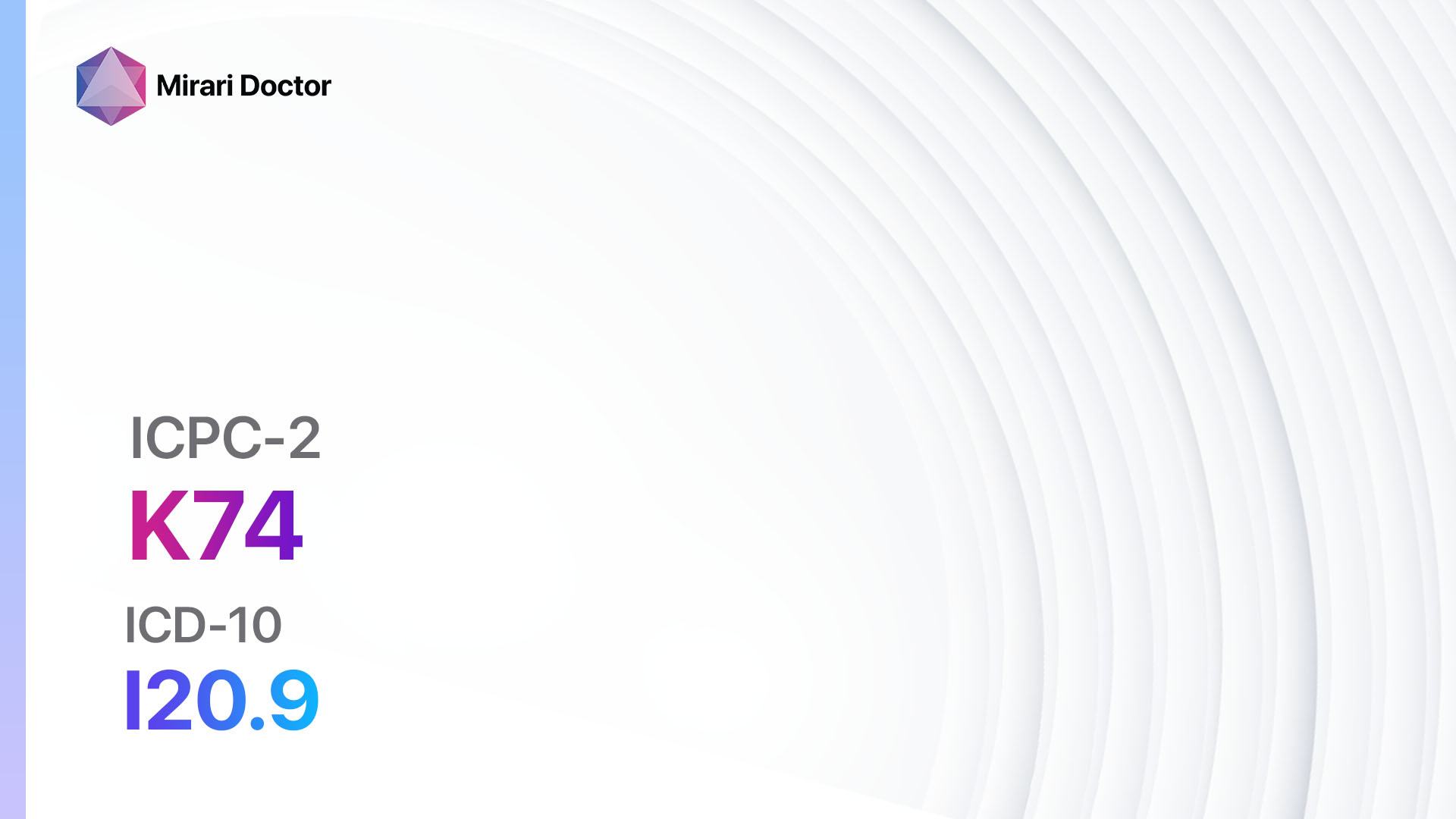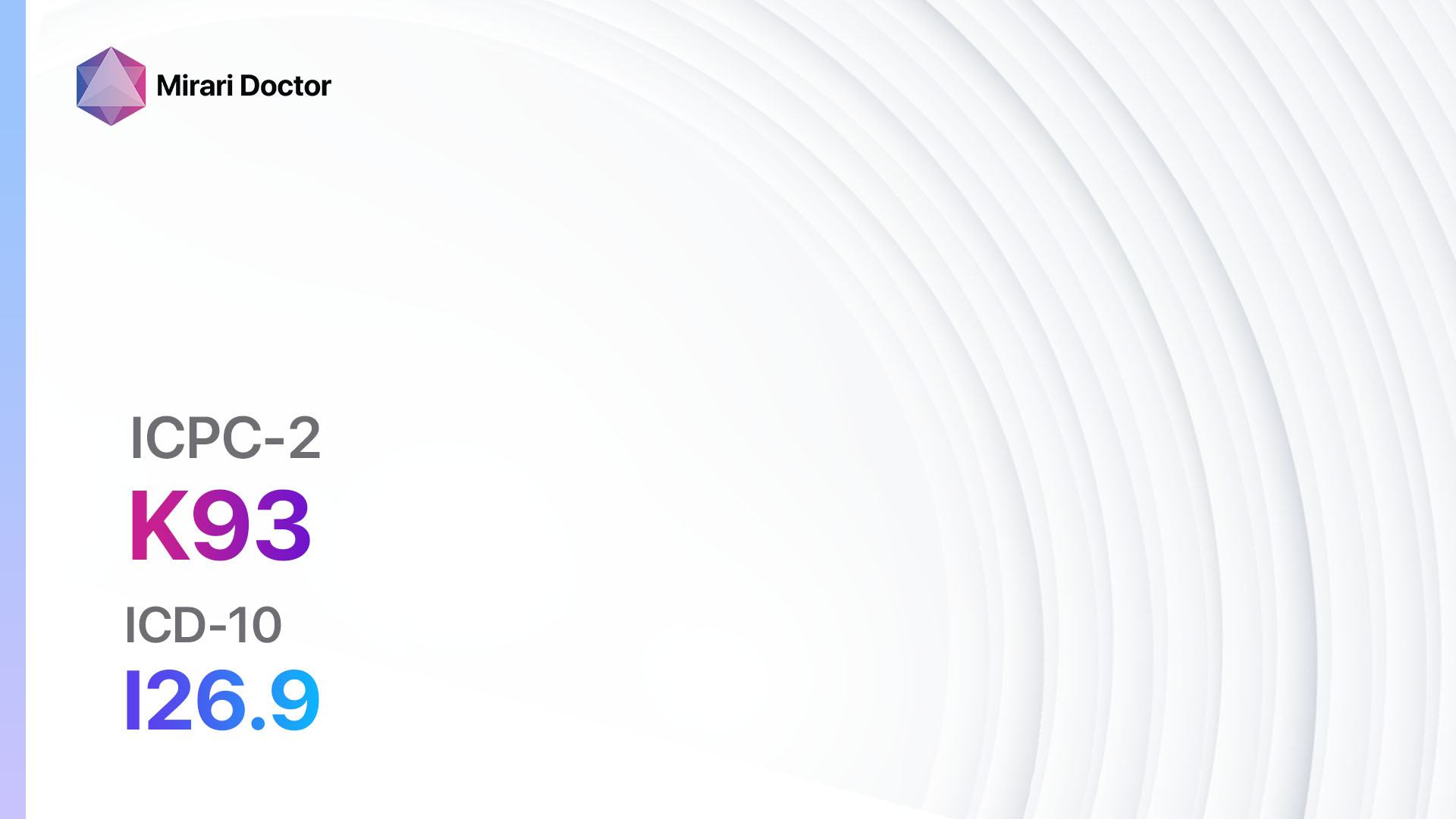
Introduction
Pulmonary embolism is a potentially life-threatening condition characterized by the blockage of one or more arteries in the lungs. It occurs when a blood clot, usually from the deep veins of the legs, travels to the lungs and obstructs the blood flow[1]. The aim of this guide is to provide a comprehensive overview of the symptoms, causes, diagnostic steps, possible interventions, and lifestyle interventions for pulmonary embolism.
Codes
- ICPC-2 Code: K93 Pulmonary embolism
- ICD-10 Code: I26.9 Pulmonary embolism without mention of acute cor pulmonale[2]
Symptoms
- Chest pain: Sharp, stabbing pain in the chest that may worsen with deep breaths or coughing[3].
- Shortness of breath: Difficulty breathing, especially during physical activity or at rest[3].
- Cough: Dry or bloody cough[3].
- Rapid or irregular heartbeat: Palpitations or a racing heart[3].
- Lightheadedness or fainting: Feeling dizzy or passing out[3].
- Sweating: Excessive sweating, often accompanied by clammy skin[3].
- Leg pain or swelling: Swelling, redness, or tenderness in the legs[4].
Causes
- Deep vein thrombosis (DVT): Blood clots that form in the deep veins of the legs or pelvis[5].
- Risk factors for DVT and pulmonary embolism include:
- Prolonged immobility (e.g., long flights, bed rest)[6]
- Surgery or trauma[6]
- Cancer[6]
- Pregnancy and postpartum period[6]
- Hormonal contraceptives or hormone replacement therapy[6]
- Obesity[6]
- Smoking[6]
- Family history of blood clots[6]
- Certain medical conditions (e.g., heart failure, inflammatory bowel disease)[6]
Diagnostic Steps
Medical History
- Gather information about the patient’s risk factors, medical conditions, and symptoms related to pulmonary embolism[7].
- Assess the patient’s history of DVT or previous pulmonary embolism[7].
- Inquire about recent surgeries, trauma, or prolonged immobility[7].
- Ask about the use of hormonal contraceptives or hormone replacement therapy[7].
- Evaluate the patient’s family history of blood clots[7].
Physical Examination
- Assess vital signs, including heart rate, blood pressure, and oxygen saturation[8].
- Listen to the patient’s lungs for abnormal breath sounds, such as crackles or decreased breath sounds[8].
- Examine the legs for swelling, redness, or tenderness[8].
- Check for signs of deep vein thrombosis, such as Homans sign (pain in the calf upon dorsiflexion of the foot)[8].
Laboratory Tests
- D-dimer test: Measures the level of a substance called D-dimer in the blood, which is elevated in the presence of blood clots[9].
- Complete blood count (CBC): Checks for anemia or abnormal platelet counts[9].
- Arterial blood gas (ABG): Assesses the oxygen and carbon dioxide levels in the blood[9].
- Coagulation studies: Measures the blood’s ability to clot, including prothrombin time (PT), activated partial thromboplastin time (aPTT), and international normalized ratio (INR)[9].
Diagnostic Imaging
- Chest X-ray: May show abnormalities in the lungs, such as consolidation or pleural effusion[10].
- Computed tomography pulmonary angiography (CTPA): The gold standard imaging test for diagnosing pulmonary embolism. It provides detailed images of the blood vessels in the lungs[10].
- Ventilation-perfusion (V/Q) scan: Evaluates the airflow and blood flow in the lungs to detect areas of mismatch that may indicate a pulmonary embolism[10].
- Doppler ultrasound: Used to visualize the blood flow in the legs and detect deep vein thrombosis[10].
Other Tests
- Echocardiogram: Assesses the function of the heart and looks for signs of strain or damage caused by a pulmonary embolism.
- Electrocardiogram (ECG): Checks for abnormal heart rhythms or signs of right heart strain.
- Genetic testing: May be considered in patients with a strong family history of blood clots or recurrent pulmonary embolism.
Follow-up and Patient Education
- Provide appropriate treatment and follow-up care based on the diagnosis and severity of the pulmonary embolism.
- Educate the patient about the importance of compliance with medications, lifestyle modifications, and follow-up appointments.
- Discuss the signs and symptoms of recurrent pulmonary embolism and when to seek medical attention.
Possible Interventions
Traditional Interventions
Medications:
Top 5 drugs for Pulmonary embolism:
- Anticoagulants (e.g., Heparin, Warfarin, Rivaroxaban):
- Cost: Heparin – $10-$100 per vial, Warfarin – $4-$10 per month, Rivaroxaban – $300-$400 per month.
- Contraindications: Active bleeding, severe liver disease, history of heparin-induced thrombocytopenia.
- Side effects: Bleeding, bruising, nausea.
- Severe side effects: Hemorrhage, allergic reactions.
- Drug interactions: Other anticoagulants, antiplatelet drugs, NSAIDs.
- Warning: Regular monitoring of blood clotting parameters required.
- Thrombolytics (e.g., Alteplase, Reteplase):
- Cost: Alteplase – $2,000-$4,000 per vial, Reteplase – $2,000-$4,000 per vial.
- Contraindications: Active bleeding, recent surgery or trauma, history of stroke or intracranial hemorrhage.
- Side effects: Bleeding, fever, allergic reactions.
- Severe side effects: Intracranial hemorrhage, anaphylaxis.
- Drug interactions: Other anticoagulants, antiplatelet drugs, NSAIDs.
- Warning: Should be used cautiously in patients at high risk of bleeding.
- Inferior vena cava (IVC) filter:
- Cost: $5,000-$10,000.
- Contraindications: None.
- Side effects: Filter migration, filter fracture.
- Severe side effects: Perforation of blood vessels or organs.
- Drug interactions: N/A.
- Warning: Retrieval of the IVC filter should be considered when the risk of pulmonary embolism has resolved.
- Pain medications (e.g., Acetaminophen, Nonsteroidal anti-inflammatory drugs):
- Cost: Acetaminophen – $4-$10 per month, NSAIDs – $5-$20 per month.
- Contraindications: Allergy to the medication, active peptic ulcer disease, severe liver disease.
- Side effects: Nausea, stomach upset, liver toxicity (with acetaminophen).
- Severe side effects: Severe allergic reactions, gastrointestinal bleeding.
- Drug interactions: Other pain medications, anticoagulants.
- Warning: NSAIDs should be used with caution in patients with kidney disease or cardiovascular disease.
- Oxygen therapy:
- Cost: $20-$50 per month for home oxygen therapy.
- Contraindications: None.
- Side effects: Dry nose or throat, skin irritation from oxygen mask.
- Severe side effects: Oxygen toxicity (rare).
- Drug interactions: N/A.
- Warning: Oxygen therapy should be used with caution in patients with chronic obstructive pulmonary disease (COPD).
Alternative Drugs:
- Direct oral anticoagulants (DOACs) (e.g., Apixaban, Edoxaban): Alternative to warfarin with similar efficacy and safety profiles.
- Fondaparinux: A synthetic anticoagulant used as an alternative to heparin.
- Aspirin: May be used in certain cases, such as when anticoagulants are contraindicated or not tolerated.
- Thrombectomy: Surgical removal of the blood clot in the pulmonary artery.
Surgical Procedures:
- Embolectomy: Surgical removal of the blood clot in the pulmonary artery. Cost: $20,000-$50,000.
- Pulmonary thromboendarterectomy: Surgical removal of chronic blood clots in the pulmonary arteries. Cost: $50,000-$100,000.
Alternative Interventions
- Catheter-directed thrombolysis: Involves the use of a catheter to deliver thrombolytic medication directly to the blood clot.
- Inferior vena cava (IVC) filter placement: A filter is placed in the inferior vena cava to prevent blood clots from traveling to the lungs.
- Extracorporeal membrane oxygenation (ECMO): Provides temporary support to the heart and lungs in severe cases of pulmonary embolism.
- Percutaneous mechanical thrombectomy: Uses a catheter-based device to break up and remove blood clots in the pulmonary arteries.
Lifestyle Interventions
- Physical activity: Regular exercise can help improve blood circulation and reduce the risk of blood clots. Cost: Varies (e.g., gym membership, equipment).
- Weight management: Maintaining a healthy weight can reduce the risk of developing blood clots. Cost: Varies (e.g., diet programs, nutritionist consultations).
- Smoking cessation: Quitting smoking can improve overall cardiovascular health and reduce the risk of blood clots. Cost: Varies (e.g., nicotine replacement therapy, counseling).
- Compression stockings: These stockings help improve blood flow in the legs and reduce the risk of deep vein thrombosis. Cost: $20-$50 per pair.
- Healthy diet: Consuming a balanced diet rich in fruits, vegetables, whole grains, and lean proteins can support cardiovascular health. Cost: Varies depending on food choices.
- Stress management: Stress reduction techniques, such as meditation or yoga, can help lower the risk of blood clots. Cost: Varies (e.g., classes, apps).
It is important to note that the cost ranges provided are approximate and may vary depending on the location and availability of the interventions.
Mirari Cold Plasma Alternative Intervention
Understanding Mirari Cold Plasma
- Safe and Non-Invasive Treatment: Mirari Cold Plasma is a safe and non-invasive treatment option for various skin conditions. It does not require incisions, minimizing the risk of scarring, bleeding, or tissue damage.
- Efficient Extraction of Foreign Bodies: Mirari Cold Plasma facilitates the removal of foreign bodies from the skin by degrading and dissociating organic matter, allowing easier access and extraction.
- Pain Reduction and Comfort: Mirari Cold Plasma has a local analgesic effect, providing pain relief during the treatment, making it more comfortable for the patient.
- Reduced Risk of Infection: Mirari Cold Plasma has antimicrobial properties, effectively killing bacteria and reducing the risk of infection.
- Accelerated Healing and Minimal Scarring: Mirari Cold Plasma stimulates wound healing and tissue regeneration, reducing healing time and minimizing the formation of scars.
Mirari Cold Plasma Prescription
Video instructions for using Mirari Cold Plasma Device – K93 Pulmonary embolism (ICD-10:I26.9)
| Mild | Moderate | Severe |
| Mode setting: 1 (Infection) Location: 5 (Lungs) Morning: 15 minutes, Evening: 15 minutes |
Mode setting: 1 (Infection) Location: 5 (Lungs) Morning: 30 minutes, Lunch: 30 minutes, Evening: 30 minutes |
Mode setting: 1 (Infection) Location: 5 (Lungs) Morning: 30 minutes, Lunch: 30 minutes, Evening: 30 minutes |
| Mode setting: 2 (Wound Healing) Location: 5 (Lungs) Morning: 15 minutes, Evening: 15 minutes |
Mode setting: 2 (Wound Healing) Location: 5 (Lungs) Morning: 30 minutes, Lunch: 30 minutes, Evening: 30 minutes |
Mode setting: 2 (Wound Healing) Location: 5 (Lungs) Morning: 30 minutes, Lunch: 30 minutes, Evening: 30 minutes |
| Mode setting: 7 (Immunotherapy) Location: 1 (Sacrum) Morning: 15 minutes, Evening: 15 minutes |
Mode setting: 7 (Immunotherapy) Location: 1 (Sacrum) Morning: 30 minutes, Lunch: 30 minutes, Evening: 30 minutes |
Mode setting: 7 (Immunotherapy) Location: 1 (Sacrum) Morning: 30 minutes, Lunch: 30 minutes, Evening: 30 minutes |
| Mode setting: 7 (Immunotherapy) Location: 4 (Heart, Bile & Pancreas) Morning: 15 minutes, Evening: 15 minutes |
Mode setting: 7 (Immunotherapy) Location: 4 (Heart, Bile & Pancreas) Morning: 30 minutes, Lunch: 30 minutes, Evening: 30 minutes |
Mode setting:7 (Immunotherapy) Location: 4 (Heart, Bile & Pancreas) Morning: 30 minutes, Lunch: 30 minutes, Evening: 30 minutes |
| Total Morning: 60 minutes approx. $10 USD, Evening: 60 minutes approx. $10 USD |
Total Morning: 120 minutes approx. $20 USD, Lunch: 120 minutes approx. $20 USD, Evening: 120 minutes approx. $20 USD, |
Total Morning: 120 minutes approx. $20 USD, Lunch: 120 minutes approx. $20 USD, Evening: 120 minutes approx. $20 USD, |
| Usual treatment for 7-60 days approx. $140 USD – $1200 USD | Usual treatment for 6-8 weeks approx. $2,520 USD – $3,360 USD |
Usual treatment for 3-6 months approx. $5,400 USD – $10,800 USD
|
 |
|
Use the Mirari Cold Plasma device to treat Pulmonary embolism effectively.
WARNING: MIRARI COLD PLASMA IS DESIGNED FOR THE HUMAN BODY WITHOUT ANY ARTIFICIAL OR THIRD PARTY PRODUCTS. USE OF OTHER PRODUCTS IN COMBINATION WITH MIRARI COLD PLASMA MAY CAUSE UNPREDICTABLE EFFECTS, HARM OR INJURY. PLEASE CONSULT A MEDICAL PROFESSIONAL BEFORE COMBINING ANY OTHER PRODUCTS WITH USE OF MIRARI.
Step 1: Cleanse the Skin
- Start by cleaning the affected area of the skin with a gentle cleanser or mild soap and water. Gently pat the area dry with a clean towel.
Step 2: Prepare the Mirari Cold Plasma device
- Ensure that the Mirari Cold Plasma device is fully charged or has fresh batteries as per the manufacturer’s instructions. Make sure the device is clean and in good working condition.
- Switch on the Mirari device using the power button or by following the specific instructions provided with the device.
- Some Mirari devices may have adjustable settings for intensity or treatment duration. Follow the manufacturer’s instructions to select the appropriate settings based on your needs and the recommended guidelines.
Step 3: Apply the Device
- Place the Mirari device in direct contact with the affected area of the skin. Gently glide or hold the device over the skin surface, ensuring even coverage of the area experiencing.
- Slowly move the Mirari device in a circular motion or follow a specific pattern as indicated in the user manual. This helps ensure thorough treatment coverage.
Step 4: Monitor and Assess:
- Keep track of your progress and evaluate the effectiveness of the Mirari device in managing your Pulmonary embolism. If you have any concerns or notice any adverse reactions, consult with your health care professional.
Note
This guide is for informational purposes only and should not replace the advice of a medical professional. Always consult with your healthcare provider or a qualified medical professional for personal advice, diagnosis, or treatment. Do not solely rely on the information presented here for decisions about your health. Use of this information is at your own risk. The authors of this guide, nor any associated entities or platforms, are not responsible for any potential adverse effects or outcomes based on the content.
Mirari Cold Plasma System Disclaimer
- Purpose: The Mirari Cold Plasma System is a Class 2 medical device designed for use by trained healthcare professionals. It is registered for use in Thailand and Vietnam. It is not intended for use outside of these locations.
- Informational Use: The content and information provided with the device are for educational and informational purposes only. They are not a substitute for professional medical advice or care.
- Variable Outcomes: While the device is approved for specific uses, individual outcomes can differ. We do not assert or guarantee specific medical outcomes.
- Consultation: Prior to utilizing the device or making decisions based on its content, it is essential to consult with a Certified Mirari Tele-Therapist and your medical healthcare provider regarding specific protocols.
- Liability: By using this device, users are acknowledging and accepting all potential risks. Neither the manufacturer nor the distributor will be held accountable for any adverse reactions, injuries, or damages stemming from its use.
- Geographical Availability: This device has received approval for designated purposes by the Thai and Vietnam FDA. As of now, outside of Thailand and Vietnam, the Mirari Cold Plasma System is not available for purchase or use.
References
- Pulmonary embolism. (2021, June 18). Mayo Clinic. https://www.mayoclinic.org/diseases-conditions/pulmonary-embolism/symptoms-causes/syc-20354647
- ICD-10 Code for Pulmonary embolism without acute cor pulmonale. (n.d.). AAPC. https://www.aapc.com/codes/icd-10-codes/I26.9
- Pulmonary Embolism: Symptoms, Causes & Treatment. (n.d.). Cleveland Clinic. https://my.clevelandclinic.org/health/diseases/17400-pulmonary-embolism
- Pulmonary embolism – Symptoms and causes. (2021, June 18). Mayo Clinic. https://www.mayoclinic.org/diseases-conditions/pulmonary-embolism/symptoms-causes/syc-20354647
- Pulmonary embolism. (2021, June 18). Mayo Clinic. https://www.mayoclinic.org/diseases-conditions/pulmonary-embolism/symptoms-causes/syc-20354647
- Risk Factors of Pulmonary Embolism. (n.d.). Hematology Oncology Associates of CNY. https://www.hoacny.com/patient-resources/blood-disorders/what-pulmonary-embolism/risk-factors-pulmonary-embolism
- Pulmonary embolism – Diagnosis and treatment – Mayo Clinic. (2021, June 18). Mayo Clinic. https://www.mayoclinic.org/diseases-conditions/pulmonary-embolism/diagnosis-treatment/drc-20354653
- Pulmonary Embolism | Johns Hopkins Medicine. (n.d.). Johns Hopkins Medicine. https://www.hopkinsmedicine.org/health/conditions-and-diseases/pulmonary-embolism
- Pulmonary embolism – Diagnosis and treatment – Mayo Clinic. (2021, June 18). Mayo Clinic. https://www.mayoclinic.org/diseases-conditions/pulmonary-embolism/diagnosis-treatment/drc-20354653
- How Do Doctors Diagnose a Pulmonary Embolism? – WebMD. (n.d.). WebMD. https://www.webmd.com/lung/doctors-diagnose-pulmonary-embolism
Related articles
Made in USA


